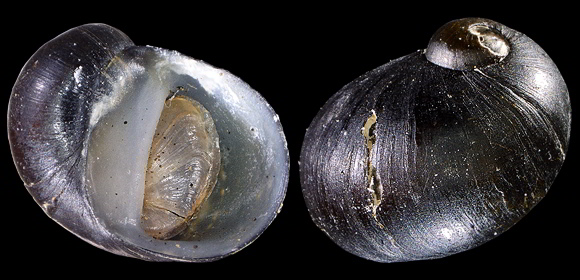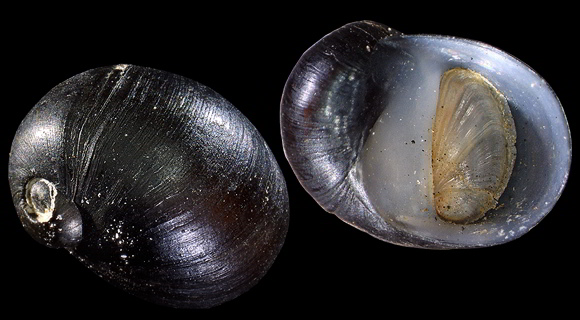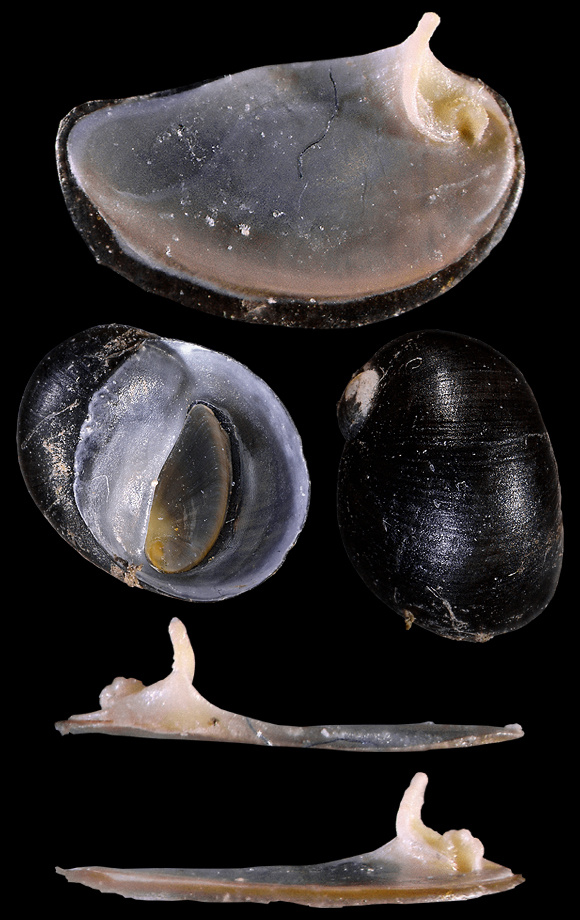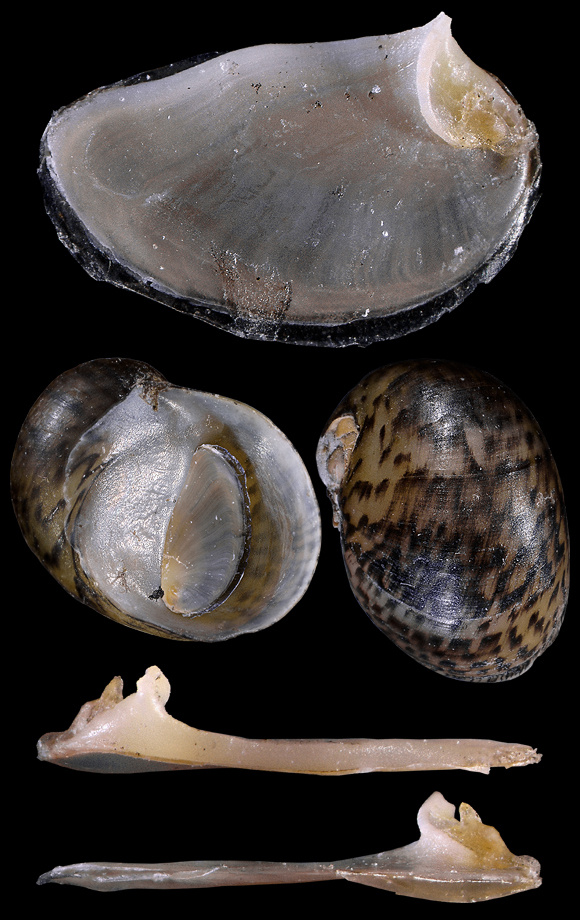
Formerly (-600.000 bp) widespread throughout the Pannonian region, the species prevostianus disappeared from the rivers, and remains nowadays as relict in some very rare hypothermal (≈ 24°C) springs of Bad Vöslau and Bad Fischau in Austria, Bušeča Vas in Slovenia and Kács in Hungary. If the vast majority of these little groups disappeared during the XXth century, some recent attempts to reintroduce the species in ancient spots give today promising results.
Original taxon: Nerita prevostiana. Grazer.
It is not clear yet wether Prevostianus is a form of danubialis or a separate species (Sands & al., 2020). Molecular studies suggest (Fehér & al., 2009) that extant populations of prevostianus can be « remnant lineages of the stem species, whereas the T. danubialis can be one of the lineages that rapidly evolved into a new species. »
Kácsfürdi thermal spring, Mezökövesd district, Northern Hungary. 7mm.

« Shell ovate, convex, finely streaked, monochrome bluish black, smooth, slightly shiny. The spire consists of 2,5 whorls: the last very large, the other ones small, forming a kind of vortex projecting above the latter. Aperture semicircular, bluish-white inside, darker at the periphery; columellar margin flat, labial margin sharp. » – C. Pfeiffer: Naturgeschichte deutscher Land- und Süsswasser- Mollusken vol. III, Weimar 1828, p.49. In fact, the species is not always uniformly black: some populations do bear dark zigzag patterns on a yellowish background. – Same spot. 7,5mm.

